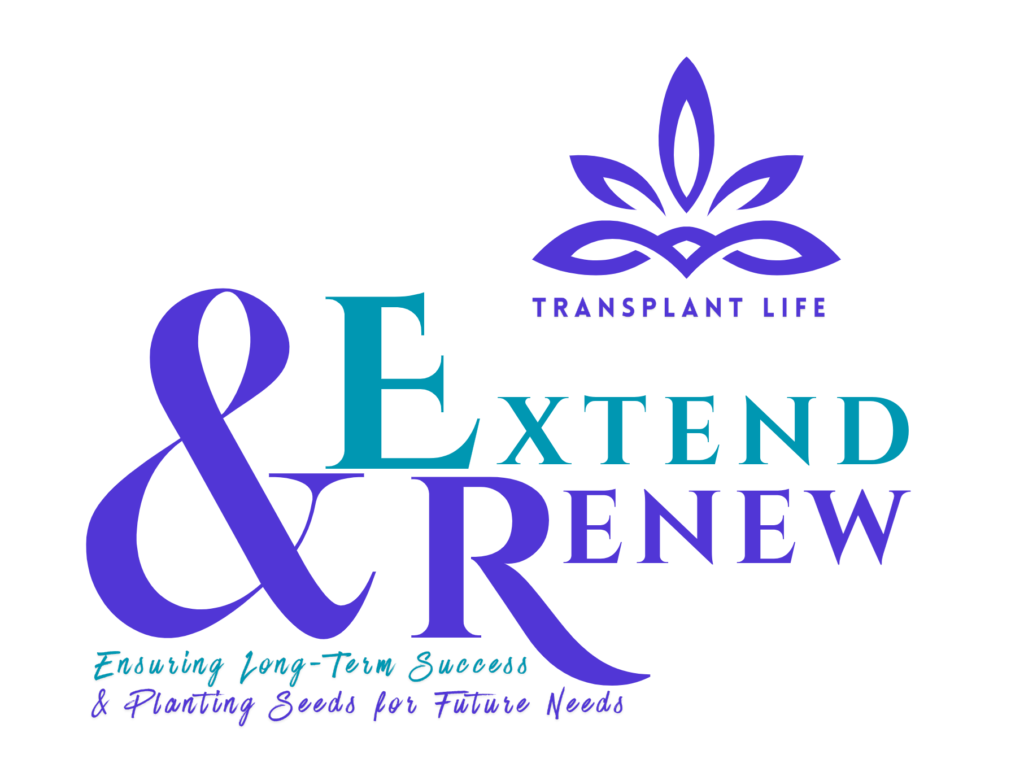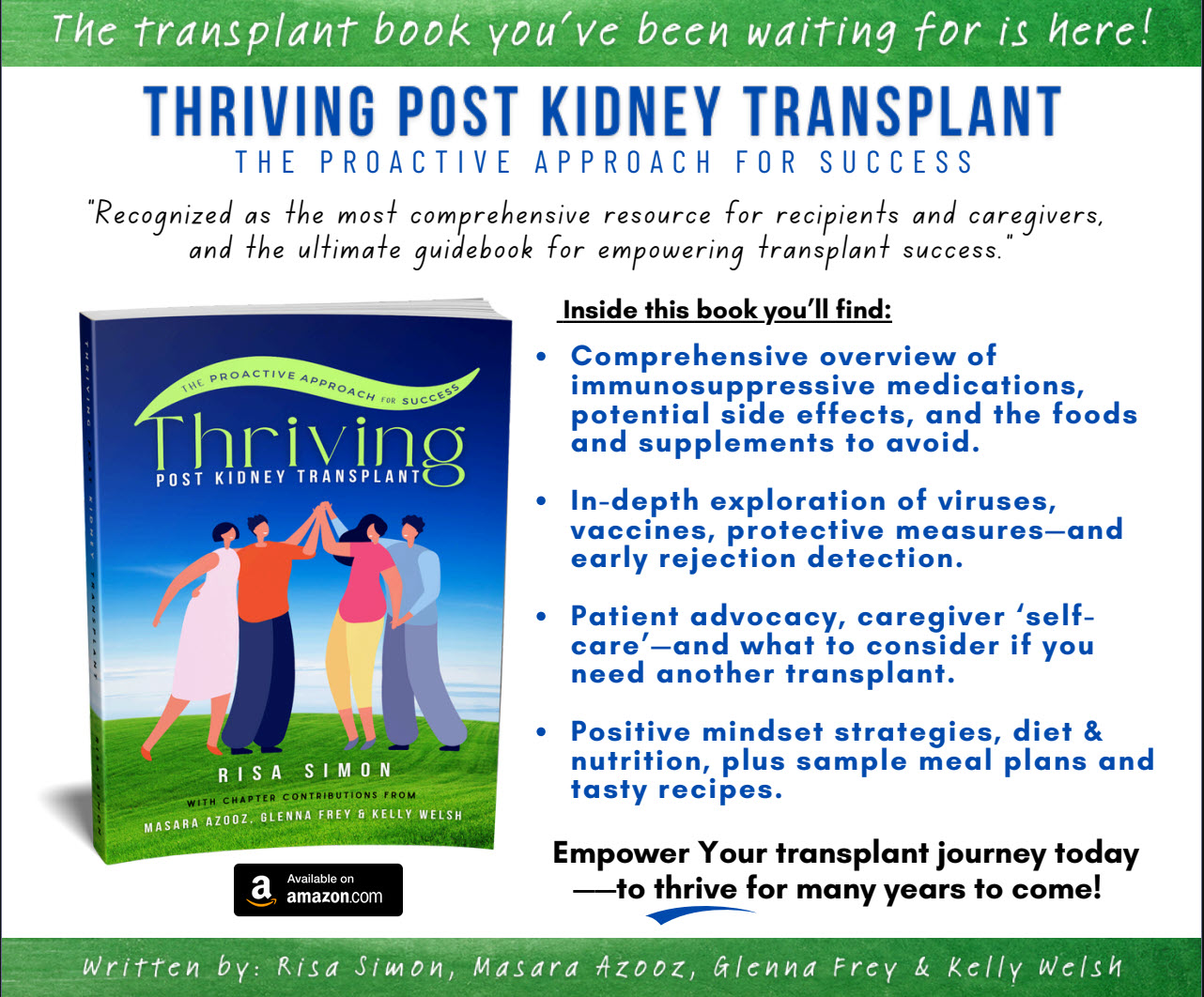
Recipients need share their stories about the need for a 2nd transplant—(or their donor’s future need) someday.Of course the goal is to extend graft function, yet it’s equally important to recognized that more needs to be done to prepare in advance of need.
“Extend & Renew mindsets encourage transplant recipients (and their respective donors) to proactively inspire living donation for others as well as their own future needs.”
Given that early workups are advised for recipients with failing grafts, having interested back-up donors can be most reassuring. Of course, having their name on the National Kidney Registry’s (NKR) Family Voucher Program (from a person who already donated to a stranger) provides the optimal solution for unpredictable needs and timelines. 5Proactive engagement of this nature can also minimize or completely eliminate the need for dialysis prior to transplant. 2
A living donor kidney has the greatest impact on improving graft and recipient survival in patients with multiple kidney transplants. 2
Voucher Programs Save Lives Now, While Protecting Future Needs. 3
Transplant recipients (and living kidney donors) have a win-win opportunity to educate and encourage healthy people to consider living kidney donation. This is so more people can be helped today, while at the same time they can be protecting their own future.
Simply put: The Family Voucher Program allows a qualified donor candidate to donate one of their kidneys to a stranger as soon as they are able, to protect the future needs of a friend or loved-one.
By donating through the Family Voucher Program, donors can donate according to their schedule. Before donating, they can list up to five family members (or friends) who are not in imminent need of a transplant, as a way to protect one of those five listed should they ever need a transplant in the future. Only one of the five listed can use their voucher, and after one voucher has been used, the other four vouchers are void.
The most wonderful thing about the Family Voucher Program is that it presents an opportunity for goodhearted people to save and improve the life of at least one stranger today (and possibly many more if they’re involved in a chain of multiple donors and recipients).
They can also help someone on the deceased donor waitlist. Yet, no matter how their donation is utilized, they can still protect the future needs of one of the five people listed on their voucher agreement. When that voucher is redeemed, the voucher holder will be prioritized for a living donor kidney through the National Kidney Registry (NKR) Family Voucher Program. (Family voucher donors are also eligible for the support and protections covered by Donor Shield)
*(It should be noted that NKR also offers “Standard Vouchers” for hopeful recipients in immediate need).
NKR’s “Kidney for Life” Initiative
NKR’s Kidney for Life initiative, utilizes the latest generation in DNA sequencing technology to assess the histologic, or eplet, mismatch between patients and donors, which increases the odds of a better match for the recipient. 4,5
Eplet assessments allow transplant centers to more effectively select donors for specific recipients by better understanding the epitope mismatch risk factor between the donor and recipient. Epitope mismatch risk assessment use matching technology more effectively than traditional antigen matching.
Studies have shown that getting a low-risk match based on epitope mismatch risk assessment creates an opportunity to safely reduce immunosuppression dosages.
Let’s look at the value of eplets
- Identify an antigen mismatch (which is where rejection often starts). Antigens are made up of eplets. An eplet mismatch between a donor and recipient allows the recipient’s medical team to better understand the risk of rejection. 4,5
- Can reduce the risk of de novo DSA formation and lower the probability of rejection and graft failure.5
- Can lower the recipient’s immune-suppression dosage
- Ultimately, lead to the recipient only requiring one transplant during their lifetime.5
The only pair that cannot benefit from entering paired exchange to find a low eplet mismatch is a six-antigen sibling pair.4
A Word About Voucher Program
Why? Because it can take months to match recipients with incompatible donors (especially blood types B and O recipients), the National Kidney Registry (NKR), and the Alliance for Paired Donation (APKD) offer Voucher Programs as an alternative.
What they do: Vouchers allow a living kidney donor to donate to a stranger (at a convenient time and location), to secure a match for their incompatible recipient in immediate need.
Options: Altruistic donors don’t have to have a recipient in immediate need to enter the voucher program. They can choose to donate to a stranger and use the vouchers to protect the future of loved ones.
Here’s how it works: The donor can list up to five loved ones as “voucher holders,” whether they listed a recipient in immediate need, or not. More specifically, loved ones can be listed (1) as primary voucher holders, or (2) as “back-up” voucher holders, when the donor’s intended recipient didn’t need to use their voucher. In either case, only one listed person is eligible to use their voucher, which is based on the “first in need.”
For a list of transplant centers contracted with NKR’s KPD and Voucher Programs: https://www.kidneytransplantcenters.org/

